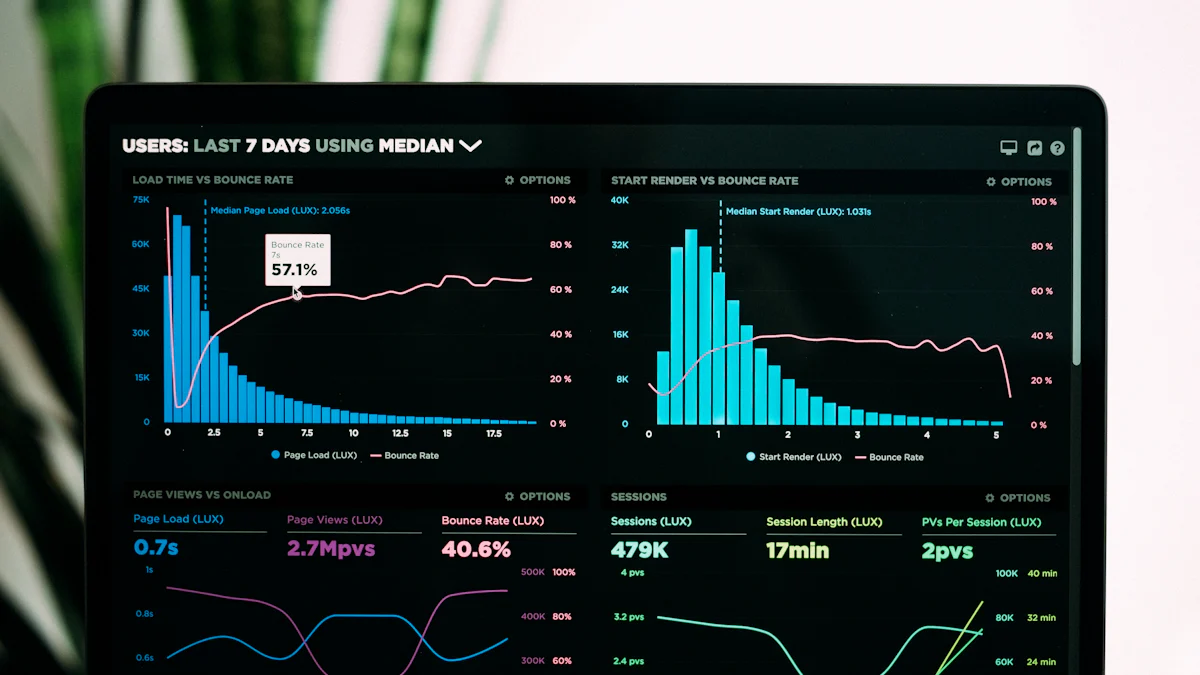From Data to Decisions: Optimizing Demand Forecasting in Automotive

In the automotive industry, demand forecasting plays a pivotal role in shaping business strategies and ensuring operational efficiency. Accurate predictions enable manufacturers to meet customer demands effectively, enhancing satisfaction and loyalty. Leveraging precise data collection and advanced analytics, companies can optimize inventory levels, reduce stockouts, and improve supply chain efficiency. With customer expectations evolving rapidly, businesses need reliable methods to forecast demand for better decision-making and cost reduction. As the industry embraces innovation with electric and hydrogen cars, accurate demand forecasting becomes increasingly vital for predicting future trends.
Importance of Demand Forecasting

Understanding Demand Forecasting
Definition and Scope
In the automotive industry, demand forecasting is a critical aspect that drives operational efficiency and strategic decision-making. By utilizing quantitative methods, manufacturers can enhance responsive fulfillment, reduce inventory holding costs, and optimize production planning. The ability to predict consumer demand accurately enables Automotive OEMs to offer the right product mix to customers, ultimately reducing risks of over or underproduction and increasing the availability of cars.
Historical Context
Over time, forecasting demand has become increasingly essential for manufacturers and dealers in the automotive sector. With new developments constantly emerging in the industry, predicting demand accurately has become more challenging yet crucial. Manufacturers are now facing the pressure to avoid significant losses by accurately anticipating market demands.
Role in Automotive Industry
Production Planning
Demand forecasting plays a pivotal role in production planning for Automotive OEMs. By analyzing historical sales data and market trends, manufacturers can align their production schedules with anticipated demand levels. This ensures efficient utilization of resources and minimizes wastage, leading to streamlined operations.
Effective inventory management is another key area where demand forecasting proves its significance. By predicting future demand patterns, Automotive OEMs can maintain optimal inventory levels, avoiding stockouts while minimizing excess inventory costs. This proactive approach helps in balancing supply with demand requirements efficiently.
Methods of Demand Forecasting
When it comes to demand forecasting in the automotive industry, companies rely on a combination of qualitative and quantitative techniques to predict future consumer needs accurately. These methods play a crucial role in strategic decision-making and operational efficiency, allowing Automotive OEMs to optimize production schedules and inventory levels effectively.
Qualitative Techniques
One approach that Automotive OEMs often utilize is seeking expert opinions from industry specialists. By consulting with experts who have a deep understanding of market trends and consumer behavior, companies can gain valuable insights into potential demand shifts. This qualitative method provides a holistic view of the market landscape, enabling manufacturers to make informed decisions about product offerings and production volumes.
Another essential qualitative technique is conducting thorough market research. By analyzing consumer preferences, purchasing patterns, and external factors influencing demand, Automotive OEMs can refine their forecasting models. Market research helps companies stay attuned to changing customer needs and competitive dynamics, allowing them to adjust their strategies proactively. Through comprehensive data analysis, manufacturers can identify emerging trends and anticipate future demand fluctuations accurately.
Quantitative Techniques
In addition to qualitative methods, Automotive OEMs leverage quantitative techniques like time series analysis to forecast demand more precisely. This statistical approach involves examining historical sales data over specific time intervals to identify patterns and trends. By extrapolating past performance into future projections, companies can estimate future demand levels with greater accuracy. Time series analysis enables manufacturers to establish baseline forecasts that serve as a foundation for further refinement using additional data sources.
Advancements in technology have enabled Automotive OEMs to implement machine learning models for demand forecasting. By leveraging algorithms that analyze vast datasets and detect complex patterns, companies can enhance the accuracy of their predictions. Machine learning models adapt dynamically to changing market conditions, providing real-time insights into evolving consumer behaviors. This data-driven approach empowers manufacturers to make agile decisions based on predictive analytics, optimizing inventory management and production planning processes.
Hybrid Approaches
Combining Qualitative and Quantitative Methods
To achieve comprehensive demand forecasts, Automotive OEMs often adopt hybrid approaches that combine both qualitative and quantitative techniques. By integrating expert insights with statistical models and machine learning algorithms, companies can develop robust forecasting frameworks. This hybrid methodology leverages the strengths of each approach, mitigating individual limitations while enhancing overall forecast accuracy. Through a synergistic blend of qualitative nuance and quantitative rigor, manufacturers can navigate uncertainties in the market landscape with confidence.
Benefits of Demand Forecasting
Operational Efficiency
Accurate demand forecasting is a cornerstone of operational efficiency for Automotive OEMs. By reducing stockouts and minimizing excess inventory, companies can streamline their production processes and enhance customer satisfaction. Reducing Stockouts ensures that the right products are available at the right time, preventing missed sales opportunities and maintaining a positive brand image. This proactive approach enables manufacturers to meet consumer demands promptly, fostering long-term relationships and loyalty.
In parallel, Minimizing Excess Inventory plays a crucial role in cost management and resource optimization. By aligning inventory levels with anticipated demand, Automotive OEMs can avoid unnecessary storage costs and reduce the risk of obsolete stock. This strategic inventory control not only frees up working capital but also enhances overall supply chain resilience. Through precise demand forecasting, companies can strike a balance between supply and demand dynamics, ensuring efficient operations while maximizing profitability.
Financial Performance
Demand forecasting directly impacts the financial performance of Automotive OEMs by facilitating cost reduction and profit maximization strategies. Cost Reduction is a significant benefit derived from accurate demand forecasts as it enables companies to optimize their procurement processes and minimize carrying costs. By aligning production with actual demand patterns, manufacturers can avoid overproduction expenses and reduce markdowns on unsold inventory.
Conversely, Profit Maximization is achievable through targeted pricing strategies based on forecasted demand trends. By understanding consumer preferences and market dynamics in advance, Automotive OEMs can capitalize on high-demand periods and adjust pricing accordingly. This proactive approach not only boosts revenue streams but also enhances overall profitability margins. Through insightful demand forecasting models, companies can make informed decisions that drive sustainable growth and financial success.
Strategic Planning
Strategic planning is enhanced through accurate demand forecasting practices that empower Automotive OEMs to develop long-term business strategies with a competitive edge. A well-informed Long-term Business Strategy relies on reliable demand forecasts to anticipate market trends and consumer behavior shifts effectively. By aligning product development cycles with projected demands, manufacturers can stay ahead of the curve and position themselves as industry leaders.
Moreover, leveraging demand forecasting for Competitive Advantage allows Automotive OEMs to differentiate themselves in a crowded marketplace. By anticipating customer needs before competitors do, companies can tailor their offerings to meet specific requirements proactively. This foresight not only secures market share but also establishes brand loyalty among consumers. Through strategic planning supported by robust demand forecasting insights, Automotive OEMs can navigate uncertainties with confidence and drive sustainable growth in the dynamic automotive landscape.
Automotive organizations leverage AI and machine learning algorithms to analyze vast datasets and predict demand patterns more accurately. Accurate demand forecasting offers numerous benefits, particularly in the auto sector where demand planning is crucial to stay competitive. Looking ahead, the future of demand forecasting in the automotive industry will continue to evolve with advanced technologies and predictive analytics. The adoption of these innovative forecasting techniques is essential for Automotive OEMs to enhance operational efficiency, optimize inventory management, and drive strategic decision-making. Embracing cutting-edge solutions will empower companies to anticipate market trends proactively and maintain a competitive edge in the dynamic automotive landscape.
See Also
Expert Advice for Overcoming Automotive Supply Chain Challenges
Machine Learning Transforms Supply Chain Management: Big Data Perspectives
Tomorrow's Logistics Revolutionized by AI in the Supply Chain
Innovative AI Solutions for Enhanced Supply Chain Efficiency
Insights on AI Integration in Shaping the Future Supply Chain
